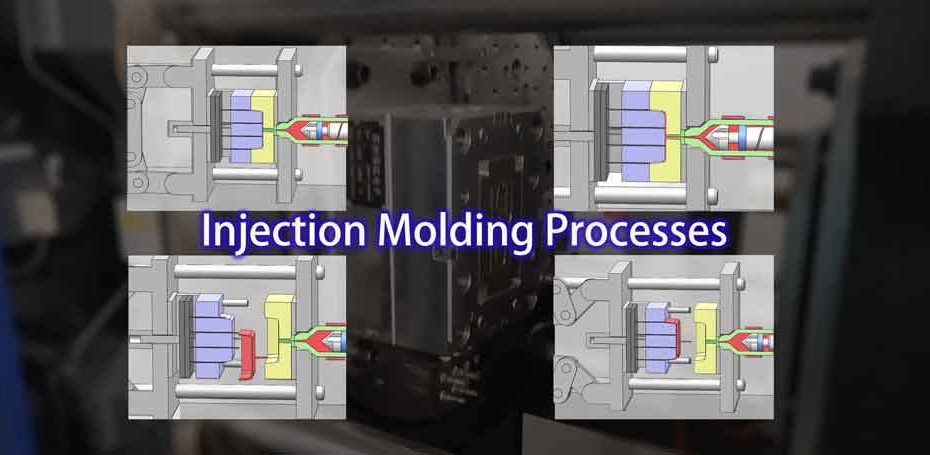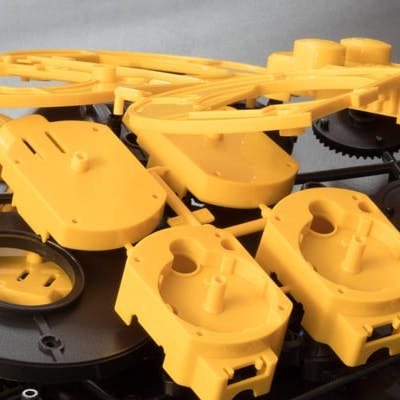The Future of Plastic Shot Molding: Trends and Technologies to Watch
As the plastic injection molding market advances, numerous essential patterns are emerging that assurance to improve its landscape. Automation and smart production strategies are set to improve productivity, while the shift in the direction of lasting materials shows an expanding ecological consciousness. Innovations in 3D printing are paving the way for unprecedented layout adaptability. However, these technologies also produce difficulties that require mindful consideration. Comprehending just how these elements will interact and influence future methods is crucial for stakeholders seeking to browse this transformative period properly.
Automation and Smart Manufacturing
As the plastic shot molding sector evolves, automation and clever production are taking center stage, revolutionizing manufacturing procedures - Plastic Injection Molding. The combination of innovative innovations such as robotics, IoT (Web of Points), and synthetic intelligence is allowing suppliers to boost efficiency, minimize functional costs, and improve product top quality. Automated systems improve process, reducing manual treatment and increasing throughput, which is vital in satisfying the rising demand for rapid production cycles
Smart making innovations assist in real-time tracking and information evaluation, permitting business to maximize maker efficiency and predict upkeep requirements. This positive technique not only decreases downtime but also expands the lifespan of devices. The use of collective robotics, or cobots, enhances the versatility of manufacturing lines, making it possible for devices and workers to run side by side safely and successfully.
The fostering of automation in plastic injection molding is not simply a fad but a critical important for companies intending to continue to be competitive in a global market. By utilizing these innovations, suppliers can achieve greater accuracy, reduce waste, and adjust promptly to transforming consumer demands, placing themselves for lasting development in an increasingly automatic future.
Sustainable Materials and Practices
The push in the direction of automation and clever manufacturing has actually led the means for a higher emphasis on sustainable materials and practices within the plastic shot molding sector. Business are progressively seeking environmentally friendly alternatives to traditional petroleum-based plastics, leading to the fostering of recycled and bio-based products. These sustainable products not just minimize environmental impact yet likewise line up with consumer need for greener items.

Additionally, collaboration in between manufacturers, product suppliers, and ecological organizations is promoting innovation in the advancement of lasting products that meet efficiency criteria without jeopardizing high quality. As policies around plastic use come to be more stringent, the sector is positioned to adjust by welcoming these sustainable techniques, guaranteeing lasting practicality and lowering dependence on non-renewable sources. The combination of sustainability right into plastic injection molding is not simply a fad; it is becoming an important part of corporate responsibility and functional quality.
Developments in 3D Printing
Recent advancements in 3D printing technology are significantly transforming the landscape of plastic injection molding. The integration of additive production processes enables the quick prototyping of complex geometries that were difficult or when challenging to attain via conventional methods - Plastic Injection Molding. This capability not just increases product growth cycles however likewise minimizes product waste, straightening with the growing demand for lasting production techniques
Additionally, the appearance of hybrid production strategies, which integrate 3D printing and injection molding, offers suppliers the capacity to create elaborate the original source layouts while maintaining the performance of automation. This strategy makes it possible for the production of customized components tailored to certain customer requirements without giving up the rate and scalability that shot molding provides.
In addition, innovations in products, such as high-performance polymers and composites specifically developed for 3D printing, are boosting the practical abilities of printed elements. These products can stand up to better anxiety and exhibit boosted thermal buildings, making them suitable for even more demanding applications.
As 3D printing proceeds to advance, its assimilation into plastic injection molding processes promises to improve performance, decrease prices, and foster development in item style, placing manufacturers to much better fulfill the difficulties of an open market.
Information Analytics and IoT Assimilation
Data analytics and the integration of the Web of Points (IoT) are changing plastic injection molding by giving producers with unprecedented insights into their procedures. By leveraging real-time information gathered from interconnected devices and sensing units, producers can check performance metrics, visit this site right here determine inefficiencies, and optimize manufacturing procedures. This data-driven technique assists in predictive upkeep, decreasing downtime and expanding tools life expectancy.
Moreover, IoT integration enables boosted quality assurance. By continuously tracking variables such as pressure, temperature level, and cycle times, producers can swiftly detect variances from developed parameters and make changes in genuine time. This not only boosts item consistency but also reduces waste and scrap rates.
The fusion of data analytics and IoT modern technologies also equips manufacturers to embrace even more nimble production methods. With accessibility to comprehensive information analytics, organizations can respond to market demands with higher versatility, adjusting production routines and arrangements as required. This versatility is essential in a quickly changing manufacturing landscape.

Modification and Design Adaptability
Exactly how can customization and design adaptability boost the competition of plastic injection molding? In a significantly diverse market, the capacity to use customized remedies is vital. Modification allows manufacturers to meet details customer demands, fitting special measurements, forms, and performances that standard products may not fulfill. This versatility not just fosters client loyalty yet also opens avenues for brand-new service possibilities throughout numerous sectors, from automobile to durable goods.
Advancements in layout modern technologies, such as computer-aided style (CAD) and fast prototyping, further reinforce this fad. These tools make it possible for designers to develop intricate geometries and complex patterns, which can be blog perfectly integrated into the manufacturing process. Consequently, suppliers can react promptly to changing consumer choices and market demands.
In addition, the implementation of modular tooling systems enhances design adaptability, permitting quicker modifications in between various product designs without substantial downtime. This versatility can result in reduced preparations and lower manufacturing costs, making companies a lot more agile and affordable. Ultimately, welcoming modification and layout versatility in plastic injection molding not only elevates product offerings yet additionally enhances market positioning in an ever-evolving landscape.
Conclusion
The future of plastic injection molding is identified by significant advancements in automation, sustainable techniques, and ingenious products. Modification with modular tooling and fast prototyping will certainly allow manufacturers to remain receptive and competitive to the dynamic demands of the market.

The future of plastic injection molding is defined by considerable advancements in automation, sustainable techniques, and cutting-edge materials.